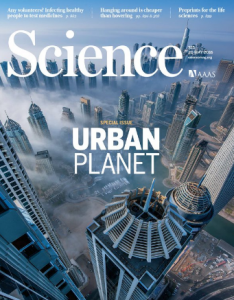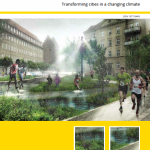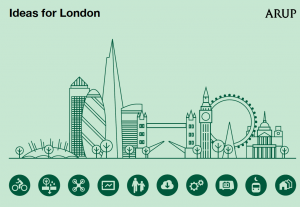Site search:
-
What’s new?
Energy for London Tags
Brent Buildings Camden Carbon Emissions CHP Cities Climate Adaptation Community Heating Community Initiatives Croydon Data DECC Decentralised Energy Distribution ECO Energy Costs Energy Efficiency Enfield FIT Fuel Poverty Funding Green Deal Hackney Haringey Housing Islington Lambeth Library Local Authorities Mayor Newham Ofgem Olympics Photovoltaics Planning RE:FIT RE:NEW Renewable Energy Retrofit Southwark Tower Hamlets Transport Waltham Forest Waste WestminsterEnergy Archives:
- February 2021 (1)
- January 2021 (15)
- December 2020 (15)
- November 2020 (9)
- October 2020 (3)
- August 2020 (5)
- July 2020 (3)
- June 2020 (4)
- April 2020 (10)
- March 2020 (5)
- February 2020 (2)
- January 2020 (3)
- October 2019 (1)
- September 2019 (4)
- August 2019 (2)
- July 2019 (1)
- August 2018 (1)
- November 2016 (8)
- October 2016 (8)
- September 2016 (2)
- August 2016 (8)
- July 2016 (14)
- April 2016 (12)
- March 2016 (16)
- February 2016 (8)
- January 2016 (4)
- December 2015 (1)
- November 2015 (1)
- October 2015 (16)
- September 2015 (3)
- June 2015 (1)
- May 2015 (1)
- April 2015 (1)
- March 2015 (1)
- February 2015 (1)
- January 2015 (1)
- December 2014 (18)
- November 2014 (4)
- August 2014 (8)
- July 2014 (7)
- June 2014 (25)
- May 2014 (8)
- April 2014 (4)
- March 2014 (12)
- February 2014 (7)
- January 2014 (13)
- December 2013 (11)
- November 2013 (15)
- October 2013 (15)
- September 2013 (18)
- August 2013 (5)
- July 2013 (20)
- June 2013 (33)
- May 2013 (8)
- April 2013 (16)
- March 2013 (25)
- February 2013 (14)
- January 2013 (20)
- December 2012 (23)
- November 2012 (23)
- October 2012 (25)
- September 2012 (14)
- July 2012 (12)
- June 2012 (43)
- May 2012 (20)
- April 2012 (8)
- March 2012 (40)
- February 2012 (39)
- January 2012 (40)
- December 2011 (22)
- November 2011 (40)
- October 2011 (33)
- September 2011 (48)
- August 2011 (40)
- July 2011 (58)
- June 2011 (41)
- May 2011 (80)
- April 2011 (38)
- March 2011 (33)
- February 2011 (25)
- January 2011 (24)
- December 2010 (3)
- November 2010 (7)
- October 2010 (6)
- September 2010 (7)
- August 2010 (1)
- July 2010 (2)
- June 2010 (4)
- May 2010 (1)
- March 2010 (3)
- February 2010 (3)
- December 2009 (5)
- November 2009 (2)
- October 2009 (3)
- July 2009 (3)
- June 2009 (1)
- April 2009 (1)
- March 2009 (1)
- February 2009 (1)
- January 2009 (1)
- December 2008 (2)
- October 2008 (1)
- September 2008 (1)
- July 2008 (1)
- March 2008 (2)
- January 2008 (2)
- October 2007 (1)
- September 2007 (3)
- July 2007 (1)
- March 2007 (1)
- February 2007 (3)
- November 2006 (3)
- August 2006 (1)
- February 2006 (1)
- May 2005 (1)
- February 2004 (1)
News
City-integrated renewable energy for urban sustainability
 July 2016: A recent issue of the journal Science published a number of articles around the theme Urban Planet. One of the papers published was entitled: City-integrated renewable energy for urban sustainability (link to full text). The paper takes a high-level overview on a range of key carbon reduction opportunities at the city-level.
July 2016: A recent issue of the journal Science published a number of articles around the theme Urban Planet. One of the papers published was entitled: City-integrated renewable energy for urban sustainability (link to full text). The paper takes a high-level overview on a range of key carbon reduction opportunities at the city-level.
“To prepare for an urban influx of 2.5 billion people by 2050, it is critical to create cities that are low-carbon, resilient, and livable. Cities not only contribute to global climate change by emitting the majority of anthropogenic greenhouse gases but also are particularly vulnerable to the effects of climate change and extreme weather. We explore options for establishing sustainable energy systems by reducing energy consumption, particularly in the buildings and transportation sectors, and providing robust, decentralized, and renewable energy sources. Through technical advancements in power density, city-integrated renewable energy will be better suited to satisfy the high-energy demands of growing urban areas. Several economic, technical, behavioral, and political challenges need to be overcome for innovation to improve urban sustainability.”
Posted in Decentralised Energy, Energy Efficiency, Library, News, Renewable Energy, Uncategorized
Tagged Cities
Leave a comment
Future London Climate Risks Set Out
12 July 2016: The Committee on Climate Change (CCC) Adaptation Sub Committee (ASC) published a major new study today providing a detailed scientific assessment of climate change risks to UK. Further information is provided in the following press release, a summary synthesis report, which also links to the individual six sector chapters – which includes a chapter on ‘People and the Built Environment‘ (which is examined below)..
Below is a summary of some of the points most relevant to London from the synthesis report:
- Urban water management: climate change is expected to lead to significant increases in heavy rainfall, with sewers in many urban areas already at or over capacity. More action is needed protect individual properties whilst also beginning to redesign urban landscapes (such as through the use of sustainable drainage approaches) to be able to cope with more intense patterns of rainfall. [p32]
- At present, there are no comprehensive policies in place to adapt existing homes and other buildings to high temperatures, manage urban heat islands, nor safeguard new homes. The level of risk from overheating across the UK is unknown for hospitals, care homes, schools, prisons, and places of work. [p33]
- The urban heat island effect. UK planning strategies do not currently make specific recommendations for reducing the heat island effect such as through planning and urban design, beyond promoting urban green space. [p34]
- More action needed to deliver sustainable drainage systems, upgrade sewers where appropriate, and tackle drivers of increasing surface runoff (e.g. impermeable surfacing in urban areas). [p61]
- Climate-related hazards damage historic structures and sites now, but there is a lack of information on the scale of current and future risks, including for historic urban green spaces and gardens as well as structures.[p66]
- The action underway in London to assess and manage risks of overheating on public transport should continue, together with similar action as needed elsewhere in the UK. [p66]
Posted in Library, News
Tagged Buildings, Cities, Climate Adaptation, Health, Transport
Leave a comment
The future of RE:FIT?
July 2016: Following a win by the RE:FIT scheme at the prestigious Ashden Awards last month, an interesting article in BusinessGreen asks whether the scheme will continue under the new Mayor:
“Mayor Khan has promised action on energy efficiency through building standards and his proposed Energy for Londoners not for profit company. But with the Mayor’s Office yet to choose an environment appointee and currently reviewing all ongoing programs, it was unable at time of writing to provide BusinessGreen with any details about future plans for the RE:FIT scheme.”
However, a recent MQ response from the Mayor seems to set the issue to rest for now with the Mayor not only stating that the programme will continue, but will need to be ramped up:
Tony Devenish
Do you intend to continue with the GLA’s RE:FIT and RE:NEW energy efficiency programmes? How effective do you understand the programmes have been?
The Mayor
I intend to continue with homes and buildings retrofit programmes. But to achieve my ambitious target of becoming a zero carbon city by 2050 we will need to rapidly increase the pace of retrofitting, so I am currently exploring what more can be done.
Much more can be seen on RE:FIT on the GLA website
Urban adaptation to climate change
 July 2016: A new European Environment Agency (EEA) study “Urban adaptation to climate change in Europe 2016 – Transforming cities in a changing climate” has just been published. The report examines whether action on adaptation has led to more climate-resilient cities and if not, what needs to be changed.
July 2016: A new European Environment Agency (EEA) study “Urban adaptation to climate change in Europe 2016 – Transforming cities in a changing climate” has just been published. The report examines whether action on adaptation has led to more climate-resilient cities and if not, what needs to be changed.
The EEA has a few references to work undertaken in London such as:
- “London is installing white panels on top of its public transport buses to reflect the rays of the summer sun and keep the vehicles cooler” (which refers to a 2014 article here). and that;
- “London held a workshop on adaptation indicators in 2015 but as of November 2015 had not yet decided how it will take the work forward” (it is not immediately clear which workshops this comment refers to).
No mention is made in the study to London’s authoritative Climate Change Adaptation Strategy from 2011 or the London Plan’s climate change adaptation policies. (NB Mayor Boris Johnson had committed in February 2015 to produce an update to the adaptation strategy sometime in 2015. Following the non-publication of this update, responding to a question a year later, he committed to the update being produced before his departure as Mayor (May 2016) – however, as yet, no update has been released).
Energy and Climate Questions to the Mayor
June 2016: Positive to see the focus on energy and climate issues by a number of London Assembly members at the first question time of the new Mayor, Sadiq Khan. This month’s questions included the following issues:
the quantity of electricity supplied to TfL through the Mayor’s Licence Lite operation and few other questions on Licence Lite (here and here); supporting the growth of London community energy schemes; the London Energy Strategy; committing to London’s 25 per cent decentralised energy target; the 2020 nearly zero energy buildings target; the publication of the annual update to the GLA Energy and Climate Change Mitigation Strategy; London Energy Plan supporting studies; supporting the growth of district heating projects; support for London’s 2025 60 per cent carbon reduction target; the future of the RE:NEW and RE:FIT building retrofit programmes; the number of domestic energy efficiency retrofits supported by RE:NEW since January 2015; numbers on the GLA’s boiler scrappage list; ring fencing London’s Zero Carbon Homes offset fund; the number of zero carbon homes that could be built by 2020; zero carbon buildings planning requirements will come into force in 2019; how much money could be raised through the Zero Carbon Homes offset fund; interim targets to the Mayor’s manifesto commitment for London to be a zero carbon city by 2050; climate change and water vapour; how the Mayor will support London’s low carbon economy; emissions from river traffic (and another); zero emission cabs and PHVs abd if CO2 is a pollutant – and finally:
whether the Mayor understands “that further increases in carbon dioxide levels will not significantly increase average global temperatures due to near saturation absorption by CO2 in the 13 – 17 µm band of the infra-red spectrum”.
Previous months questions to the Mayor can be found here.
London Zero Carbon Homes Update
4 July 2016: Included in this month’s Mayor’s Questions was a series of useful queries around an announcement made earlier this year that the GLA would introduce a Zero Carbon Homes planning policy from 1 October 2016 for all new major housing developments. London’s plans to g0-ahead with a zero carbon homes policy runs counter to that of national government, where 10 years of work to introduce a 2016 zero carbon policy was scrapped by the Chancellor in his Summer Budget 2015, an announcement which was widely condemned by the building industry. A recent (unsuccessful) attempt to overturn this decision, in the passage of the Housing and Planning Bill (see here), specifically cited London’s stance as evidence of why the policy should be kept (see column 919 of the House of Lords debate – and reference to the GLA’s policy in House of Commons research paper here). The House of Commons Energy and Climate Change Select Committee also stated in their recent Home Energy Efficiency report that the “decision damaged confidence in the low carbon economy and will lock in the requirement for future wide-scale energy efficiency measures and costly retrofits. We recommend that the Government reinstates the zero carbon homes policy or sets out a similar policy that will ensure that new homes generate no net carbon emissions.”
The Mayor’s responses clarified that:
- Funds raised through the London zero carbon homes offset fund need to be ring-fenced by local councils
- It’s not clear at the moment how much funding will be raised for low carbon projects through the offset funds, but money has already been collected by early adopters of the policy
- That the zero carbon policy will be extended to non-residential buildings from 2019
- It’s also not clear how many zero carbon homes will be built by 2020.
The GLA has also approved research work of the various approaches that could be taken by local authorities to direct these offset funds to. The outline of this research project states that:
‘London Plan policy 5.2 sets out that where the target percentage improvements in carbon dioxide emissions beyond Part L of the Building Regulations cannot be met on-site, any short fall should be provided off-site or through cash in lieu contribution to the relevant borough. This is to be ring fenced to secure delivery of carbon dioxide savings elsewhere.
Existing London Plan policy was prepared in expectation of the establishment of a national zero carbon homes and associated ‘allowable solutions’ framework which the national government is no longer progressing. As such, for the short to medium term it is likely that carbon offset funds established by borough’s will remain the only manner for securing carbon offset funding where development is unable to viably or feasibly meet carbon dioxide emissions reduction targets on-site. As such there is a need to gain a more detailed understanding of the diversity of approaches London boroughs are currently taking to carbon offsetting in order to best inform any future GLA actions in this policy area. This work forms the first stage of the information-gathering and data analysis of this process. “
It’s great to see London leading in this area to ensure that – as the Chair of the Energy and Climate Change Committee has recently said – we are “building houses that are fit for the future. We have the technology and building techniques to construct houses that generate their own power and hardly need heating. We owe it to future generations to use them.”
Posted in Decentralised Energy, Energy Efficiency, News, Renewable Energy
Tagged Planning
Leave a comment
Air Quality implications of the London Energy Plan
April 2016: Think tank Policy Exchange has produced two reports over the past few months on London’s air quality crises (Up In the Air: How to solve London’s air quality crisis – Part 1 and Part 2). Though the bulk of the two studies are concerned with pollutants from the transport sector, the issue of emissions from London’s growing decentralised energy generation capacity also come under consideration.
Part 1 suggests that London’s support of decentralised energy systems, based around the GLA’s focus on the growth of gas fired Combined Heat and Power (CHP) plant, may exacerbate London’s air quality problems:
- The models also do not fully reflect the ongoing growth in decentralised power generation across London, including Combined Heat and Power (CHP). Decentralised energy is being promoted both by national government and the GLA, and there is now 195MW of CHP capacity across London (ranging from small units in homes to large units in industrial premises). Projections show that gas combustion in buildings could be responsible for 48% of NOx emissions by 2025 in Central London.14 There is a risk that measures to promote decentralised energy could increase local NOx emissions. [p7]
Part 2 goes on to recommend the following:
- We have also identified a risk associated with the growth of “decentralised energy” in London. Decentralised energy is being promoted by the GLA and DECC as a means to reduce carbon emissions and ensure security of supply. However, certain forms of decentralised energy produce significant NOx emissions, for example small scale gas and diesel engines, biomass boilers and CHP (Combined Heat and Power) installations. We recommend that the next Mayor of London reconsiders London’s Climate Change and Energy Strategy to reconcile the potential conflict between decentralised energy and air pollution. We also recommend changes to national energy policies led by DECC in order to resolve potential conflicts with local air pollution. [p8]
The issue of CHP and air quality has been looked at before, highlighted by campaigning group Clean Air London, and through guidance issued by the City of London and Environmental Protection UK
Hence, it is interesting to note that the GLA have recently approved “expenditure of up to £30,000 to procure and appoint consultancy services to model the air quality implications of the first four [London Energy Plan] energy plan scenarios... This study will deliver:
• A report detailing findings and recommendations
• Spatial maps showing the concentration of air pollutants estimated from the emissions rates of the heating technologies considered in the LEP.
• The dispersion of the air pollutants concentrations within the local area from the sources for four scenarios considered within the LEP.”
Posted in Decentralised Energy, News, Uncategorized
Tagged CHP, Decentralised Energy, London Energy Plan
Leave a comment
London, The Environment and the Low Carbon Economy
March 2016: The Aldersgate Group held an event on 3 March entitled ‘The Mayoral Election: London, The Environment and the Low Carbon Economy‘. A summary of the evening’s discussions are not posted on their website – however – they been emailed around. I’ve reproduced the content of that email below.
New Ideas for London
April 2016:  A further contribution of potential actions for an incoming Mayor – this time by Arup – in report just published ‘New Ideas in London‘. In the report Arup identify “five areas that the new Mayor should focus on during their first term in office.” Amongst these are a couple considering energy and climate issues – a summary of which follow below:
A further contribution of potential actions for an incoming Mayor – this time by Arup – in report just published ‘New Ideas in London‘. In the report Arup identify “five areas that the new Mayor should focus on during their first term in office.” Amongst these are a couple considering energy and climate issues – a summary of which follow below:
Driving down corporate carbon emissions
- The Mayor has the authority to help adjust London’s procurement protocols to include corporate carbon performance.
- The new Mayor could immediately commission a consultation led by the GLA’s Head of Legal and Procurement to investigate legislative options.
Electric bus battery switch scheme
- Could London work with existing suppliers to design buses that allow their batteries to be switched out quickly and smoothly without disrupting operations? This could take place at optimum points on the network and could ensure that operations are not penalised by the time it takes to charge bus batteries.
Other areas of interest include ‘A London Blue Grid’ and ‘Walking in a Green London’.
Posted in Library, News
Tagged Carbon Emissions, Climate Adaptation, Electric Vehicles
Leave a comment
The UK’s first solar bus shelter opens in Canary Wharf
11 April 2016: “The UK’s first solar power generating bus stop has been opened in Canary Wharf. Designed by Polysolar Ltd it is made with transparent photovoltaic glazing, which captures the sun’s rays even in low light. It was unveiled on Friday, April 8, outside the HSBC building in Canada Square by London Mayoral candidate Sian Berry.” Read the full story in The Wharf – with more on this story at Gizmag.
Sutton Decentralised Energy Network Tender
April 2016:  Sutton Council have recently issued a tender to support a planning application “for the construction of district heating pipes on behalf of the Authority” (specification here). Opportunity Sutton highlight how the “project will utilise waste heat from the proposed Beddington Energy Recovery Facility (ERF) and existing landfill gas engines, both of these are owned by Viridor.” Further details are available in the following brochure.
Sutton Council have recently issued a tender to support a planning application “for the construction of district heating pipes on behalf of the Authority” (specification here). Opportunity Sutton highlight how the “project will utilise waste heat from the proposed Beddington Energy Recovery Facility (ERF) and existing landfill gas engines, both of these are owned by Viridor.” Further details are available in the following brochure.
“Sales of electric cars soar 85% amid fear over pollution”
8 April 2016: The Evening Standard reports that “Hundreds more Londoners are buying electric cars as the scale of the capital’s air pollution problem is laid bare, official figures reveal today. They show a jump of more than 22 per cent in electric cars, including hybrids, registered in the city in the first three months of the year, nearly 800, compared with 650 in the first quarter of 2015. In the South-East, the rise was a huge 84.9 per cent, from 1,632 to 3,019.” EV sales data is available on the SMMT’s website – but not on a regional basis.
“The number of electric cars registered in London has jumped from 61 in the whole of 2010 to a total now over 5,000. More charging points are being installed under the Source London scheme.” Read the full story here.
Proposals to make London “the electric vehicle capital of Europe” were set out last summer by the Mayor in TfL’s Ultra Low Emission Vehicle Delivery Plan – which contains details on work to support the growth of EVs and EV charging infrastructure.
London was recently awarded £13 million to create ‘Neighbourhoods of the future’ prioritising ultra-low emission vehicles (ULEVs) in several boroughs across the capital:
- Proposals include over a dozen streets in Hackney going electric with charging infrastructure such as car-charging street lighting, while Harrow will develop a low emission zone offering parking and traffic priority to owners of plug-in vehicles
- Westminster Council already provides free parking for ULEVs and London’s proposal aims to deliver 70,000 ULEVs sold by 2020 and almost quarter of a million by 2025
To help private plug-in vehicle owners offset some of the upfront cost of the purchase and installation of a dedicated domestic recharging unit, the Government is running the Electric Vehicle Homecharge Scheme. New guidance on this scheme was issued by Government last week.

